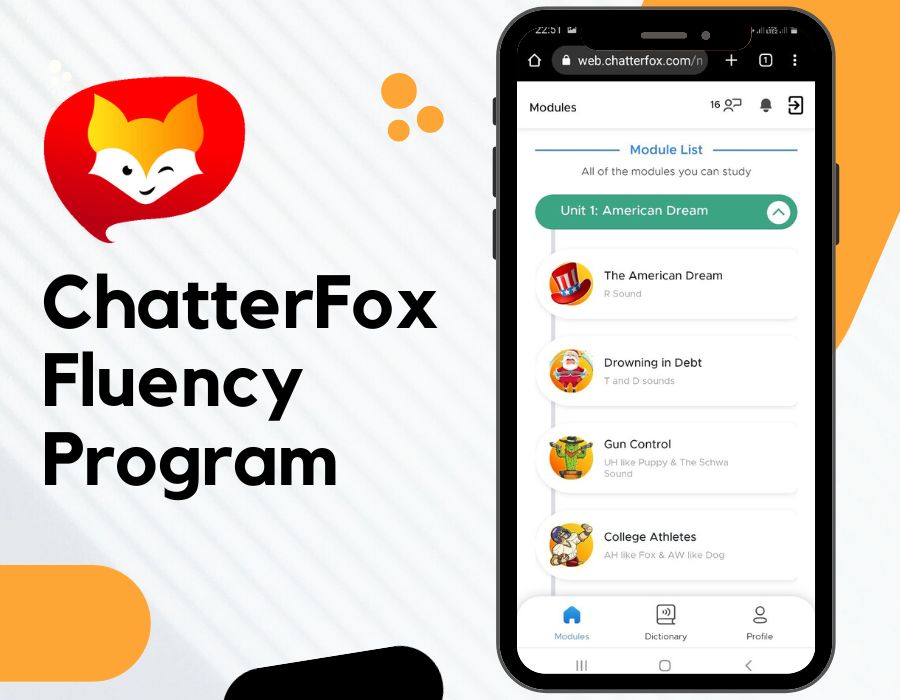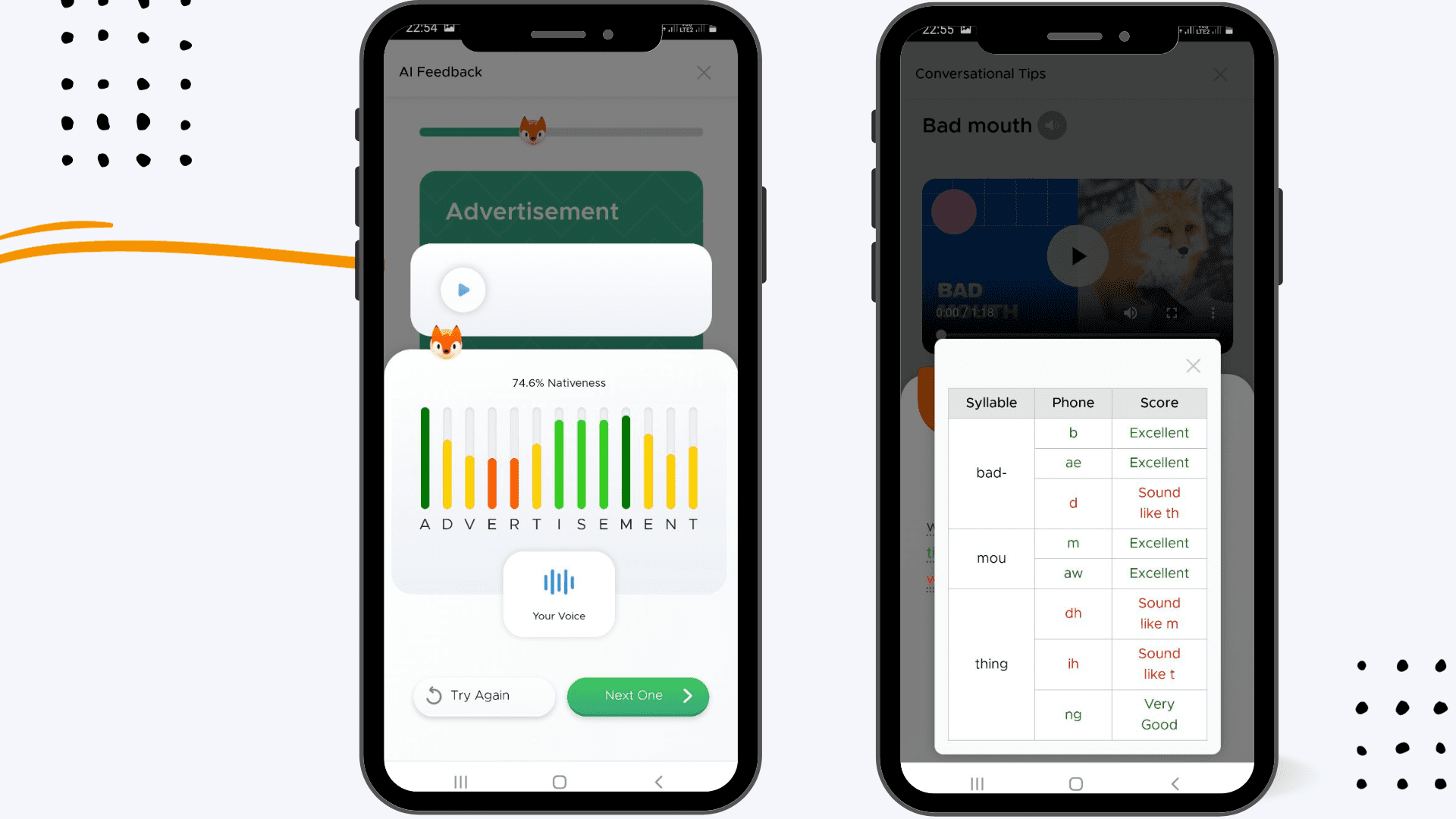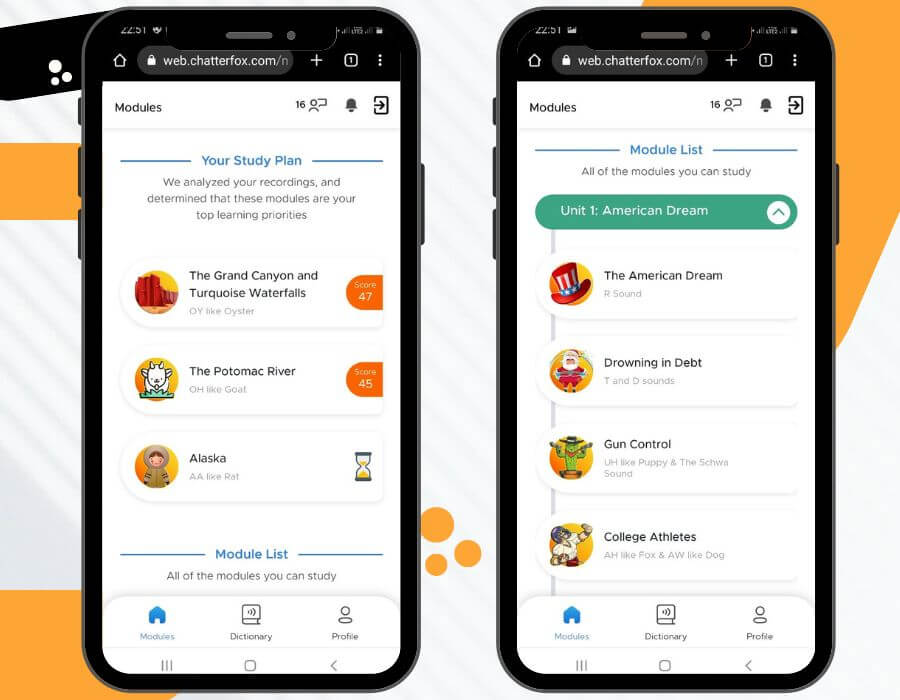Welcome back to our series on mastering dating English, specially designed for non-native English speakers. In our previous episodes, we tackled the basics of breaking the ice. Today, we progress to maintaining the momentum in your conversations with seven key phrases that not only keep the dialogue flowing but also deepen the connection with your date. Let’s explore each phrase, understand its usage, and see how it can transform your conversational skills.
Asking for someone’s opinion is a fantastic way to show that you value their thoughts and are interested in what they have to say. This question not only opens up the floor for a variety of topics but also sets a tone of mutual respect and interest.
Usage:
“During a casual walk in the park, you might ask, ‘What’s your opinion on the importance of career vs. personal life?’ Such a question can lead to a deep and meaningful conversation about life priorities and values.”
This phrase is perfect for sharing personal anecdotes. It helps you to relate your experiences to the topic of discussion, making the conversation more personal and engaging.
Usage:
“If your date mentions enjoying hiking, you could respond with, ‘That reminds me of a time when I hiked the Appalachian Trail.’ Sharing such experiences can spark further interest and discussion.”
Questions about experiences invite storytelling, which is a powerful way to form emotional connections. This phrase helps uncover shared experiences or unique adventures.
Usage:
“A great question to ask might be, ‘Have you ever experienced something completely life-changing?’ It’s a deep inquiry that can give you significant insight into what shapes them as a person.”
When your date mentions a hobby or a pastime, showing a genuine interest can make them feel appreciated and valued. It encourages a deeper dive into their interests and passions.
Usage:
“If they mention a passion for painting, you could say, ‘I’m really interested to know more about your painting style and inspirations.’ This shows that you are paying attention and genuinely interested in their life.”
This phrase is a gentle and polite way to ask for more details on a particular subject. It shows that you are engaged and interested in understanding more.
Usage:
“If your date briefly mentions a recent trip, you could ask, ‘Could you expand on what you mentioned about your trip to Italy?’ It invites them to share more about their experiences and highlights.”
Uncovering someone’s favorites is a quick way to learn about their interests and can lead to discovering mutual likes or differences. It’s light, fun, and can be very telling.
Usage:
“During a coffee meet, asking ‘What’s your all-time favorite book?’ can lead to a discussion about literary tastes, authors, and even deeper philosophical topics.”
This question is particularly useful for gauging someone’s perspective on more significant issues, whether they be cultural, social, or personal.
Usage:
“In a more serene setting, asking ‘What are your thoughts on volunteer work?’ can provide insights into their sense of community and empathy.”
Using these seven phrases thoughtfully will not only help you keep your dating conversations engaging but also build a deeper connection with your partner. Incorporating American accent lessons can further refine your pronunciation, making your speech clearer and more engaging in dating scenarios. Effective communication is key in dating, and these phrases, along with improved accent articulation, can significantly enhance your ability to converse fluently and confidently. Practice these phrases, adapt them to your style, and watch as your dating conversations transform into meaningful interactions.
Stay tuned for more practical tips in our next installment, where we will delve into expressing feelings and making future plans. Until then, happy dating and remember: a good conversation is the bridge to heartfelt connections.
Imagine a high-stakes business meeting where two potential partners are discussing a lucrative deal. One party, unfamiliar with the local customs, fails to observe a crucial etiquette norm, leading to misunderstandings and eventually, the deal falling through. This scenario highlights how critical understanding and implementing business etiquette can be in establishing successful professional relationships, especially in the diverse and dynamic context of American work culture. This article will explore 11 essential business etiquette rules vital for thriving in or engaging with American businesses.
In American workplaces, attire can range from business formal in finance to business casual in tech or creative industries. Understanding the appropriate dress code is crucial as it reflects professionalism and respect for the cultural environment of the office. Similarly, grooming standards play a significant role; being neat and presentable is often seen as a reflection of one’s attention to detail and respect for others.

“Time is money” in American culture, and punctuality is paramount. Arriving on time, or preferably early, for meetings, interviews, and appointments is considered a sign of reliability and respect for others’ time. Chronic lateness can be seen as a lack of professionalism and may harm your credibility.
The American workplace values formal introductions with a firm handshake, direct eye contact, and a clear introduction of one’s name and role. This sets the stage for professional interaction based on mutual respect and clarity. It’s customary to use titles and surnames until explicitly invited to be more informal.
While there is no official federal language in the U.S., English is the de facto language of communication and business. Mastering the dynamics of the English language—from grammar to the nuances of your accent, including aspects like syllable stress and intonation—is crucial for professional success in America. Effective communication is often equated with competence; clients and colleagues perceive fluency and a clear accent as indicators of professionalism and capability. Thus, it is essential to refine your speech for fluency, utilizing resources such as American accent courses like ChatterFox, which are designed to enhance your communication skills in professional settings.

Preparation is key in American business meetings, with an expectation for active participation and contribution. Follow-ups are just as crucial; timely summaries and actions post-meeting reflect responsibility and efficiency.
Networking is fundamental in American business culture. Establishing a broad professional network and maintaining these relationships, sometimes through social media, can significantly impact career development and opportunities.
In American business settings, gift-giving must be thoughtful, appropriate, and not overly extravagant. Understanding the context and timing for giving gifts can enhance business relationships and avoid potential misunderstandings.
Business meals follow specific protocols, with the host usually handling arrangements and payments, and guests expected to display polite dining etiquette. Tipping is customary in the U.S., with standard practices dictating gratuity levels.


Americans generally value personal space and privacy, particularly in the workplace. Respecting these boundaries, including a healthy work-life balance, is crucial in fostering a respectful and productive work environment.
With a diverse workforce, cultural sensitivity and inclusion are not just nice-to-haves but essential components of business etiquette. Avoiding assumptions and stereotypes, and embracing diversity can lead to more innovative and inclusive business practices.
Conflicts are inevitable in any professional setting. In America, handling disagreements professionally—without letting them escalate or affect the work environment negatively—is a valued skill.
Mastering these 11 business etiquette rules is essential for anyone looking to navigate and succeed in American work culture. By understanding and applying these principles, professionals can significantly enhance their interactions and opportunities in the workplace. Adapt these rules to align with your professional interactions and watch as doors open in your career trajectory.
Welcome to our new series dedicated to enhancing your dating conversations through practical English phrases. This series is specially crafted for non-native English speakers looking to improve their fluency and confidence in dating scenarios. Today, we’re focusing on breaking the ice—making that all-important first impression. Let’s dive into some key phrases that can help you start conversations effortlessly and authentically.
Initiating a conversation in a dating context doesn’t have to be daunting. Asking someone, “What brings you here?” is a perfect icebreaker that shows genuine interest in their reason for attending the same event or venue as you. It’s open-ended, inviting them to share more about themselves and setting the stage for a relaxed exchange.
Usage Tip: Use this phrase in a friendly tone to keep the conversation light and inviting.
This phrase is excellent for establishing common ground. It can lead to sharing experiences related to the place or even to discovering mutual interests. For instance, asking, “I’ve heard a lot about this place, have you been here before?” not only breaks the ice but can also extend the conversation to topics like favorite activities, food, or music found there.
Usage Tip: Follow up with related questions about their preferences or recommendations.
Commenting on something noticeable that someone is wearing or carrying not only serves as a compliment but also sparks curiosity. This approach is more personal and can lead to deeper conversations that reveal interests, backgrounds, or memorable stories.
Usage Tip: Make sure your comment is sincere, and show genuine interest in their response.
This phrase is useful when you’re at a venue that serves food or drinks. It’s a practical way to initiate conversation and might lead to shared experiences over a meal or drink. For example, “Have you tried the cocktails here? I’m thinking about getting the mint mojito.”
Usage Tip: This can be a great lead into offering to buy them a drink or suggesting you try something new together.
While it may sound cliché, this classic conversation starter has its merits in checking how frequently someone visits a place. It’s a straightforward way to find out more about their habits and possibly uncover overlapping routines.
Usage Tip: Use this phrase judiciously; it works best in places where repeated visits are common, like gyms, clubs, or cafes.
Breaking the ice is the first step in creating meaningful and engaging conversations in a dating context. By mastering these dating English phrases, you equip yourself with the tools to not only start but also sustain conversations that could lead to deeper connections. Incorporating American accent programs can further refine your pronunciation, enhancing the effectiveness of your communication. Remember, the key to success in using these phrases lies in your delivery: be genuine, be curious, and most importantly, be yourself.
Stay tuned for our next post, where we’ll explore more phrases that can help keep the conversation flowing. Until then, keep practicing these icebreakers and watch as your confidence in English conversation blossoms.
Imagine a scenario where the word ‘either’ is pronounced differently by two speakers, leading to a brief confusion in a conversation. Such subtle differences in vowel and consonant pronunciation are not just linguistic quirks; they play a significant role in communication. This article delves into the critical importance of precise vowel and consonant pronunciation in effective communication and accent training, exploring how mastering these variations is key to effective accent reduction.
Pronunciation variability lies at the heart of the rich tapestry of American English, influenced by factors such as regional dialects, sociolects, and individual speaker variations. Understanding the phonetic foundations of these variations is crucial for anyone looking to master or modify their American accent. This variability significantly affects how accents are perceived and can impact the clarity of a speaker’s pronunciation.
American English is characterized by a wide range of vowel sounds that can vary significantly even within regions. For instance, the vowel sound in ‘cot’ versus ‘caught’ can be very different depending on where in the U.S. you are. Understanding and mastering these variations, such as those influenced by the Great Vowel Shift, is crucial for learners trying to adopt an American accent.
Consonants in American English also present their own set of challenges, from the voiced and voiceless distinctions in sounds like ‘p’ and ‘b’ to the aspirated sounds often found at the start of words like ‘top’. Techniques for articulating these sounds correctly are vital for learners to grasp in order to enhance their American accent, particularly in mastering sounds that are not present in their native language.
Mastering American pronunciation involves a combination of listening and imitation exercises, phonetic training using tools like the International Phonetic Alphabet (IPA), and the use of speech analysis software for real-time feedback. These tools and methods help learners adjust their pronunciation to align more closely with American norms.
Effective teaching methods for dealing with pronunciation variability include dynamic, flexible approaches that can be personalized to address individual challenges. Teachers can utilize multimedia resources to expose learners to a variety of speaking styles and accents, enhancing their ability to adapt to different linguistic environments.
One of the biggest challenges in accent reduction is overcoming long-standing pronunciation habits. Strategies for addressing these challenges include consistent practice, the use of visual feedback tools like mirrors, and professional guidance from experienced accent coaches or speech therapists.
In the journey to master American English pronunciation, ChatterFox stands out as a key resource for learners aiming to refine their accents. This sophisticated accent neutralization course is designed specifically to help non-native speakers adjust their speech patterns to sound more like native speakers. ChatterFox utilizes advanced speech analysis technology to provide personalized feedback, ensuring that users can pinpoint and practice specific areas of pronunciation that need improvement.



The program offers a wide array of interactive exercises that focus on the nuances of American pronunciation, from vowel shifts to consonant articulation. Each lesson is crafted to help learners grasp the subtleties of American intonation and rhythm, which are crucial for authentic and clear communication. With ChatterFox, users can engage in a structured, step-by-step approach to accent reduction, making it easier to achieve their language goals efficiently and effectively.
Understanding and mastering the variability in vowel and consonant pronunciation are fundamental to effective American accent training. Continued practice and awareness of these linguistic nuances can lead to significant improvements in speech clarity and communication effectiveness.
Welcome back to our series on mastering Business English. In Episode 4, we delve into five pivotal phrases that can significantly enhance your communication in professional settings. Whether you’re involved in decision-making, managing projects, or fostering teamwork, mastering these phrases will boost your confidence and help you navigate complex business interactions more effectively. Let’s explore these expressions and how to integrate them seamlessly into your daily work routines.
Being “on the same page” is crucial for ensuring that all team members or stakeholders have a common understanding of objectives and strategies. This alignment is essential for cohesive action and decision-making.
Example:
Before any major meeting, it’s beneficial to say, “Let’s review the project brief together to ensure we’re all on the same page before meeting with the client“. This ensures that everyone has the same information and expectations.
Including someone in a communication loop, typically via email or meetings, ensures they are aware of and can contribute to relevant discussions. This phrase is crucial for maintaining transparency and inclusivity in project updates or decision-making processes.
Example:
If a department seems out of the loop, you might find yourself saying, “I haven’t heard from the IT department yet about this issue; I’ll loop them in so we can get their expertise on the matter“.
“Touch base” is a casual yet essential business term used to describe the act of briefly contacting someone to discuss and update each other on various issues or tasks. It’s a proactive approach to keep projects on track and relationships strong.
Example:
A quick check-in can be initiated with, “I need to touch base with the suppliers to confirm the delivery dates for our next batch of materials“.
This phrase is used to describe what someone contributes to a discussion, project, or team, such as unique skills, resources, or knowledge. Recognizing and articulating these contributions fosters a collaborative and appreciative workplace environment.
Example:
During team meetings, you might hear, “We are excited to see what new strategies you bring to the table during this transition period“.
To “move the needle” means to make a noticeable difference in a situation or project. This phrase is often used to describe actions that significantly affect progress or outcomes, highlighting the impact of strategic initiatives or hard work.
Example:
In performance reviews or project updates, it might be noted, “Our new marketing campaign has really moved the needle on our website traffic and customer engagement“.
Using these phrases correctly can dramatically improve how you communicate in professional settings. They allow you to express complex ideas succinctly and foster a collaborative spirit within teams. By mastering these phrases, you enhance your leadership capabilities and your influence within the company.



In our journey to master Business English, it’s essential to have the right tools at your disposal. One such invaluable resource is ChatterFox, an innovative app designed to fine-tune your pronunciation and help you grasp the nuances of spoken English.
ChatterFox uses advanced speech recognition technology to provide immediate feedback on your pronunciation, ensuring that you not only learn to use essential business phrases but also pronounce them like a native speaker. This focus on accent removal can be crucial in a professional setting where clear communication is key to establishing credibility and authority.
Features of ChatterFox:
Imagine you’re preparing for an important presentation to international stakeholders. ChatterFox can help you practice your speech, ensuring your pronunciation is clear and confident. The app might suggest adjustments to your intonation when you say “move the needle,” helping you make a more impactful delivery.
By incorporating ChatterFox into your learning regimen, you can boost your confidence and ensure that your use of business English is both proficient and professional. Whether you are pitching a new idea, leading a team meeting, or networking with industry peers, ChatterFox equips you with the linguistic precision that makes a difference.
Today, we’ve explored five robust Business English phrases that help articulate complex ideas and strategies effectively. From ensuring everyone is “on the same page” to “moving the needle” in your projects, these phrases are crucial for anyone looking to excel in a professional setting. Remember, consistent practice is key to making these phrases a natural part of your business interactions. Keep practicing and refining your communication skills to excel in your career and ensure you’re prepared for any professional challenge that comes your way. Join us next time as we continue to uncover more aspects of Business English that will help you communicate with confidence and clarity in any professional environment.
Imagine a conversation where slight variations in pitch and tone lead to misunderstandings or even change the intended meaning of words. Such subtleties are crucial in accents, particularly in the diverse linguistic landscape of American English. This article explores how mastering pitch and tone not only enhances accent training but also aids in accent reduction, helping speakers communicate more clearly and effectively.
Pitch and tone are foundational elements of spoken language, influencing how sounds are perceived and understood. Pitch refers to the highness or lowness of a voice, determined by the frequency of vocal cord vibrations. Tone, on the other hand, involves the quality and attitude conveyed by these pitch variations. The production of pitch and tone involves complex physiological processes, primarily controlled by the vocal cords and respiratory system. Variations in these elements help distinguish between regional and international accents, making them essential for accurate and expressive communication.
American English is characterized by specific pitch and tone patterns that differ significantly from other accents like British or Australian English. For example, American English typically features a more monotone pitch and less pronounced intonation patterns compared to the sing-song rhythm of British English. These characteristics are crucial for effective communication within the U.S., affecting everything from emotional expression to the clarity of interactions.


Improving pitch and tone begins with keen listening skills—attuning one’s ear to the nuances of American English through extensive exposure to native speech. Imitation exercises, where learners mimic the speech patterns of native speakers, are invaluable. Additionally, technology such as speech analyzers can provide visual feedback and help learners adjust their pitch and tone more precisely.
Effective training involves drills that specifically target pitch and tone adjustments to align with American English standards. Role-playing exercises can also simulate real-life interactions, providing practical experience in using appropriate pitch and tone. Feedback from knowledgeable coaches or peers is essential in refining these speech elements, helping learners recognize and correct their deviations.
Learners often face challenges like shedding the pitch and tone patterns of their native languages, which can be deeply ingrained. Cultural factors also play a significant role, as some cultures naturally use more expressive intonations that can be perceived differently in American contexts. Overcoming these challenges requires persistence and adaptive strategies, such as incremental learning and immersion in American speech environments.
ChatterFox stands out as a premier resource for those looking to fine-tune their pitch and tone in American English. This specialized accent modification course is designed with the nuances of American pronunciation in mind, offering targeted training that helps non-native speakers adjust their vocal patterns to sound more like native speakers. Through a combination of interactive exercises, personalized feedback, and access to expert coaching, ChatterFox equips learners with the tools necessary to master the subtle yet crucial aspects of pitch and tone that define the American accent. Whether you’re a professional seeking to polish your communication skills or a language enthusiast eager to embrace American English, ChatterFox provides a comprehensive platform to achieve your goals.



Mastering these aspects of speech can significantly enhance one’s professional interactions and open up new career opportunities, particularly in roles that require effective public speaking or negotiation. On a personal level, improving pitch and tone can boost self-confidence and help individuals feel more integrated into American society.
Mastering pitch and tone is more than an exercise in pronunciation—it’s about refining one’s entire communicative ability. This mastery is crucial for anyone looking to enhance their spoken English, providing them with the tools to express themselves clearly and effectively. Continual practice and dedication to refining pitch and tone can lead to significant improvements in both personal and professional realms.
Welcome back to our Business English series! Today, in Episode 3, we’re diving deeper into the world of professional communication, focusing on key phrases that can significantly enhance how you express yourself in the workplace. These phrases are not just vocabulary—they are tools for advancing your career by improving clarity, persuasiveness, and effectiveness in your interactions. Let’s explore these phrases and learn how to use them effectively through a variety of examples.
The phrase “It’s a long shot” refers to something that has a slim chance of success but is worth trying. It’s useful when you want to manage expectations yet signal a willingness to tackle challenging odds.
Examples:
“To sign off on something” means to give formal approval. It’s a critical step in many business processes where final approval is required to move forward with a project, document, or decision.
Examples:
When a plan or idea fails to pan out, saying “To the drawing board” indicates it’s time to start over and rethink the approach. This phrase underscores the need for creativity and resilience in problem-solving.
Examples:
“To stay on top of something” means to maintain control over a situation or to keep informed about something. It’s crucial for managing ongoing projects or when quick responses are needed.
Examples:
This phrase means to stay focused on the goal or task at hand. It’s particularly useful in fast-paced environments where losing focus can lead to mistakes or missed opportunities.
Examples:
Mastering these Business English phrases will not only boost your ability to communicate effectively but also demonstrate your professional competence and attention to detail. Incorporating accent reduction lessons can further enhance your clarity in communication. Practice integrating these elements into your daily conversations and watch as your professional interactions become more impactful and productive. Join us next as we continue to explore more tools to help you succeed in the business world. Until then, keep practicing and refining your communication skills to excel in your career!
Imagine Alex, an enthusiastic language learner from Berlin, grappling with the nuances of the American accent. Despite his vocabulary and grammar proficiency, something was amiss. It wasn’t until he attended a workshop on the subtleties of American speech that he realized what he had been overlooking: the art of silence. Through mastering silent periods and natural pausing, Alex transformed his speech pattern, making his American accent not just understood but embraced by his listeners.
Silent periods and natural pausing are often the unsung heroes in the realm of language learning. These elements are crucial in achieving not just clarity but authenticity in one’s accent. This article aims to explore how strategic use of silence and pauses can significantly enhance accent neutralization efforts and help learners achieve a more natural-sounding American accent.
Silent periods and natural pauses are moments of silence in speech that are not filled with verbal sounds. In everyday conversation, these pauses can serve various functions, such as enhancing understanding, providing emphasis, or organizing speech into understandable chunks. For example, the pause before answering a complex question or the silence that follows an important point.
Silent periods are not just common but essential in first language acquisition, where children listen intently before beginning to speak. This natural occurrence is also beneficial in learning a second language, as it allows the brain to process and absorb the new sounds and rhythms without the pressure of immediate response.


In American English, rhythm and melody are shaped significantly by the use of pauses. These silences help to mark grammatical boundaries and emphasize points, contributing to the overall flow and comprehensibility of speech. Understanding and mimicking this rhythmic flow are vital for non-native speakers aiming to reduce their accent.
Language learners often go through a ‘silent period’, a time when they are actively listening and absorbing the language without producing much speech. This phase is crucial as it allows learners to focus entirely on the sounds and patterns of the new language.
During the silent period, learners can concentrate on understanding the nuances of accent and pronunciation deeply. This focused listening without the obligation to respond helps in developing a more accurate and natural accent.
By leveraging silent periods, learners give themselves time to internalize the sounds and rhythms of American English fully. This not just aids in accurate pronunciation but also in adopting the natural flow of the language, which is critical for authentic accent reduction.


Natural pauses in speech come in various forms, each serving a distinct purpose. Syntactic pauses occur at grammatical boundaries, helping listeners parse sentences more easily. Semantic pauses allow speakers to emphasize the importance of their words, enriching the meaning conveyed. Dramatic pauses, used sparingly, can create suspense or highlight critical points, making the speech more engaging.
Effective pausing is crucial not only for enhancing speech comprehensibility but also for giving the speaker time to organize thoughts and plan what to say next. This thoughtful placement of pauses can dramatically improve the delivery’s impact, making the speech more persuasive and easier to follow.
To practice natural pausing, learners can engage in shadowing exercises where they mimic native speakers, paying close attention to where and how long pauses are made. Another effective method is scripted speech practice, where learners deliberately incorporate pauses at strategic points to enhance the speech’s clarity and impact.
Extensive listening exercises are crucial for identifying and mimicking the natural pauses in native speech. This involves listening to dialogues or speeches and noting how native speakers use silence as a strategic tool for effective communication.
One of the most effective ways to improve one’s use of pauses is by recording one’s speech and then critically analyzing it. Learners can play back their recordings to identify whether their pausing patterns align with natural speech or if adjustments are needed.
Role-playing exercises allow learners to practice spontaneous speech in a controlled environment, making it easier to experiment with natural pausing. These scenarios can simulate real-life interactions where effective pausing can be practiced and refined.
Many learners find it uncomfortable to incorporate longer pauses, fearing it might make them seem unsure or less fluent. Additionally, timing the pauses appropriately can be challenging without extensive practice and feedback.
To overcome these hurdles, learners can engage in mindfulness practices that make them more comfortable with silence in general. Gradually incorporating short pauses and increasing their duration as confidence builds can also be effective. Feedback from teachers or native speakers can provide valuable insights into the timing and appropriateness of pauses.
This article has explored the significant role that silent periods and natural pausing play in achieving an authentic American accent. Mastering these elements not only enhances speech comprehensibility and flow but also helps language learners sound more like native speakers.
To all language learners striving for accent reduction, the advice is clear: embrace the power of silence and pausing. Regular practice of these techniques should be a key component of your language learning routine.
By consciously incorporating strategic pauses and embracing natural silences in speech, learners can transform their accent reduction journey, achieving a natural and authentic American accent that resonates with clarity and confidence.
Imagine trying to convey a joke in English, only to receive blank stares—not because the joke isn’t funny, but because the rhythm and intonation were off, stripping the punchline of its impact. This scenario highlights an often-neglected aspect of language proficiency: prosody, or the rhythm and melody of speech. This article delves into the significance of mastering rhythm and intonation, crucial components of accent reduction, offering readers insight into enhancing their spoken English.
Rhythm in spoken English plays a crucial role in communication, influencing how messages are perceived and understood. English, characterized as a stress-timed language, relies heavily on the rhythmic pattern of stressed and unstressed syllables. This rhythmic structure helps distinguish between content and function words, impacting sentence fluency and listener comprehension.
Intonation in English, involving the rise and fall of pitch across phrases and sentences, serves multiple functions. It conveys emotions, emphasizes certain words, regulates conversational flow, and can alter the meaning of phrases. For instance, a rising intonation at the end of a sentence typically indicates a question, while a falling intonation suggests completion or assertion. 

To master English rhythm, one must become sensitive to the stress patterns within words and phrases. Techniques like shadowing native speakers can help learners mimic natural speech patterns. Additionally, engaging in rhythmic exercises and using metrical drills can enhance one’s ability to recognize and reproduce rhythmic structures, improving overall fluency.
Mastering intonation involves understanding its role in conveying different meanings and emotions. Practicing with intonation contours, such as those found in common expressions or typical dialogue, can help. Recording one’s speech and playing it back allows learners to self-assess and adjust their intonation patterns, refining their pronunciation and making their English sound more natural.
Integrating rhythm and intonation into everyday practice is vital for permanent skill acquisition. This can be achieved through active listening and imitation of native speech in real contexts, such as TV shows, movies, or interactions with native speakers. Language learners can also benefit from speaking exercises that focus on rhythmic and intonational variation, which will aid in developing a more authentic English speech pattern.
Learners often face challenges like overcoming the influence of their first language, which can dominate their English rhythm and intonation patterns. Personalized feedback, whether from teachers or digital pronunciation tools, is crucial in addressing these issues effectively. Consistent practice and exposure to varied English speech samples are also necessary to overcome these hurdles.
To enhance your journey in mastering pronunciation and accent reduction, ChatterFox offers a comprehensive accent reduction course tailored to your needs. This course provides personalized feedback and practice exercises that focus on phonetic placement and articulation, utilizing advanced technology to analyze and improve your speech in real-time. With ChatterFox, learners gain access to expert guidance and strategies designed to refine their American accent, making it an invaluable resource for anyone serious about enhancing their spoken English skills.


Mastering the nuances of rhythm and intonation significantly enhances the clarity and effectiveness of spoken English. By regularly practicing these elements, learners can improve not only their pronunciation but also their ability to communicate more naturally and effectively in English. With dedication and the right strategies, anyone can master these essential aspects of English pronunciation, leading to more confident and clear communication.
By exploring these techniques and integrating consistent practice, learners can achieve a natural fluency in English, making their communication clearer and more effective.
Welcome back to our ongoing series where we delve into the world of Business English Phrases. If you found our previous post on essential phrases for the workplace helpful, you’re in for a treat today! We’re continuing with part two, bringing you five more essential phrases that can elevate your professional communication skills. Let’s not waste any time and dive right in!
We’ve all been there—mid-conversation or during a meeting, and we miss what was said. It’s easy to just nod and pretend we got it, but asking for clarification is the way to go. Saying, “I didn’t quite catch that,” is a polite method to request a repeat of the information. This phrase shows that you are attentive and invested in the conversation, which is crucial in a professional setting. It’s particularly handy in noisy environments or during calls when the connection might be spotty.
Example:
In a meeting, if a point slips past you, lean in with, “I didn’t quite catch that; would you mind repeating what you just said?” It’s simple, polite, and shows your dedication to clear communication.
When it’s time to progress with a project or task, this phrase is your best friend. “Move forward with” signals a shift from planning to doing. It’s a cue to your team that it’s time to take action and also serves as a motivational boost.
Example:
A great way to use this in a sentence would be, “Please update your reports so we can move forward with finalizing the client contracts.” It indicates movement and decision-making, which are pivotal in business operations.
This is your go-to phrase for ensuring everyone is on the same page. In the middle of a complex explanation or after laying out a plan, asking, “Does that make sense?” helps confirm that your colleagues or clients follow and agree with what’s been said. It’s a fantastic tool for fostering mutual understanding and avoiding miscommunications.
Example:
Imagine discussing potential changes in a project timeline: “So, if we move forward with the changes now, the client will be confused and won’t know how to react. That’s why we need to get in touch with the client first and inform them about the upcoming changes. Does that make sense?”
This phrase is all about staying informed without coming across as pushy. “Keep me posted” is a light, friendly way to request updates on a project or situation. It implies trust and encourages open lines of communication among team members.
Example:
Drop a casual, “Keep me posted on the project’s progress, alright?” to remind your team that you’re interested in the ongoing developments without micromanaging.
Delegation is key in any workplace, and “hand off” is the phrase you need when transferring responsibility. It’s about trusting another team member to take over aspects of a project, facilitating smooth transitions within your team.
Example:
When delegating, you could say, “I’ve handed off the task to Alex. He will make sure to complete the rest before the product ships to the client.” It shows confidence in your team’s capabilities and helps streamline workflows.
There you have it—five more essential phrases that can significantly enhance your effectiveness in the workplace. Incorporating these into your daily interactions not only aids in clear communication but also demonstrates your professional competence. Practice them regularly to become a more confident and effective communicator.
Stay tuned for more tips on mastering Business English, including Accent Modification, that can help you advance in your career. Until next time, keep practicing and refining your skills!